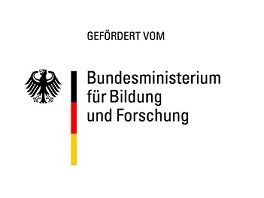Zusammenfassung
Titel
Molekulare Signaltransduktion in Vorhofmyozyten sowie deren Wechselwirkung mit der Interzellularsubstanz bei Vorhofflimmern
Wissenschaftliche Leitung
Prof. Andreas Goette, Paderborn / Magdeburg
Gesamtverantwortung
Kompetenznetz Vorhofflimmern
Finanzierung:
Bundesministerium für Bildung und Forschung (BMBF)

Ziel
Ziel der Studie war es, molekulare Mechanismen zu identifizieren, die zu prothrombotischen und proarrhythmischen Veränderungen im menschlichen flimmernden Vorhof beitragen.
Ergebnis
Neben einer Aktivierung des atrialen Angiotensin II Systems sind weitere Signalwege am strukturellen atrialen Remodeling beteiligt. Das wurde in Ex Vivo und In Vivo Modellen gezeigt. Die Charakterisierung der zugrunde liegenden molekularen Mechanismen zeigt potentielle therapeutische und prophylaktische Effekte von ACE Hemmern und Angiotensin II Rezeptor Blockern bei Patienten mit Vorhofflimmern auf. (siehe auch ANTIPAF – AFNET 2 Studie)
Publikationen
Goette A*, Bukowska A*, Dobrev D*, Pfeiffenberger J, Morawietz H, Strugala D, Wiswedel I, Röhl FW, Bergmann S, Bramlage P, Ravens U, Lendeckel U. Acute atrial tachyarrhythmia induces angiotensin II type 1 receptor mediated oxidative stress and microvascular flow abnormalities in the ventricles. Eur Heart J, 05.03.2009; *shared first authorship
Bukowska A, Lendeckel U, Krohn A, Keilhoff G, ten Have S, Neumann KH, Goette A. Atrial fibrillation down-regulates renal neutral endopeptidase expression and induces profibrotic pathways in the kidney. Europace. 2008;10:1212-7.
Goette A, D'Alessandro A, Bukowska A, Kropf S, Mewis C, Stellbrink C, Tebbenjohanns J, Weiss C, Lendeckel U. Rationale for and design of the CREATIVE-AF trial: randomized, double-blind, placebo-controlled, crossover study of the effect of irbesartan on oxidative stress and adhesion molecules in patients with persistent atrial fibrillation. Clin Drug Investig. 2008; 28:565-72.
Hammwöhner M, Smid J, Lendeckel U, Goette A. New drugs for atrial fibrillation. J Interv Card Electrophysiol. 2008; 23:15-21. Review.
Bukowska A, Schild L, Keilhoff G, Hirte D, Neumann M, Gardemann A, Neumann KH, Röhl FW, Huth C, Goette A, Lendeckel U. Mitochondrial dysfunction and redox signaling in atrial tachyarrhythmia. Exp Biol Med (Maywood). 2008; 233:558-74.
Goette A, Lendeckel U. Electrophysiological effects of angiotensin II. Part I: signal transduction and basic electrophysiological mechanisms. Europace. 2008; 10:238-41. Review.
Goette A, Bukowska A, Lendeckel U, Erxleben M, Hammwöhner M, Strugala D, Pfeiffenberger J, Röhl FW, Huth C, Ebert MP, Klein HU, Röcken C. Angiotensin II receptor blockade reduces tachycardia-induced atrial adhesion molecule expression. Circulation. 2008; 117(6):732-42.
Bukowska A, Lendeckel U, Hirte D, Wolke C, Striggow F, Röhnert P, Huth C,. Klein HU, Goette A. (2006) Activation of the Calcineurin Signaling Pathway Induces Atrial Hypertrophy During Atrial Fibrillation. J Cell Mol Life Sci; 63: 333-342.
